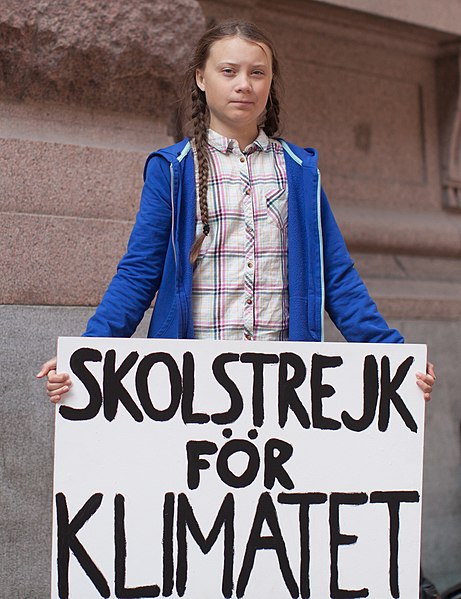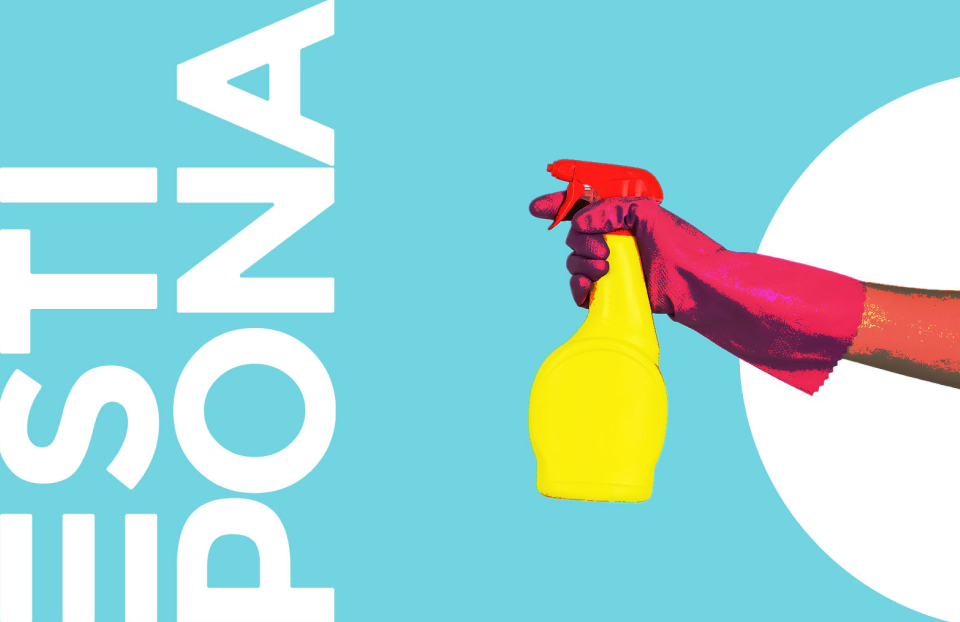Gaining 2020 Vision—6 Cultural Trends Marketers Should Consider
It’s the new year (and by some accounts, a new decade — though there’s some debate about that), which means it’s the stereotypical time for marketers to break out the Magic 8 Ball and prognosticate trends that will have an impact on our industry. So when we started looking into cultural trends to keep track of heading into the next decade, we brought along our skepticism. After all, no one knows for certain what the future holds. But the following six trends resonated with us (and one scared us a bit — see #5), because we’re already seeing their momentum.
Bottom line: While cultural observations can be fascinating, businesses and marketers need to do more than passively watch these movements unfold. If they want to succeed with consumers, they need to find ways to better serve their customers’ needs, desires and expectations this and every year.
6 Cultural Trends That Will Impact Marketing
Cultural Trend #1: Self-care is standard
What it is
The expression itself can generate an eye roll or two, but self-care is more than an excuse to take an extra day off from work or go on a yoga retreat. Self-care represents how we define our well-being in modern life and how we’re working to avoid burnout from our 24/7/365, always-on digital lives.
Consumers are looking for a sustainable lifestyle that addresses both their physical and spiritual wellness. And they’re looking for brands (and bosses) that understand and support their desire.
Where we’re seeing it
There is no shortage of products and apps designed to support our desire to care for ourselves. Think meditation and de-stress apps like Headspace and Happify and self-care brands like Gwyneth Paltrow’s goop and the male-oriented hims (even their logos are similar).
How to get on trend
If your business is not in the self-care space, your brand can still engage with consumers seeking personal improvement. Messaging can empathize with the consumer’s sense of being overwhelmed, and you can focus on no-stress interactions — whether that’s easier online purchasing or a calming, well-appointed waiting room.
Beyond things you can buy, progressive employers are getting on board to attract the best workers. In 2019, Microsoft Japan experimented with a four-day work week to provide better work-life balance. With some large companies making telecommuting part of company culture — including Aetna, AT&T and Deloitte — other companies are sure to follow with employee-friendly policies. (Our own boss foresaw this trend 10 years ago, and to this day, we’re still a virtual agency working out of our home offices.)
Cultural Trend #2: A new sense of eco-urgency
What it is
 While the last decade started with a burgeoning interest in electric cars, it ended with Greta Thunberg. The young Swedish activist mainstreamed a call for climate-friendly policies and sustainable living, while it had only been hinted at in earlier years.
While the last decade started with a burgeoning interest in electric cars, it ended with Greta Thunberg. The young Swedish activist mainstreamed a call for climate-friendly policies and sustainable living, while it had only been hinted at in earlier years.
Consumers are now embracing and vocalizing the idea that we must live in a way that protects our planet, and they’re not afraid to shame those who opt out of eco-friendly choices. They’re also looking for ways to avoid or alleviate that eco-guilt.
Where we’re seeing it
While still just 1% of all cars begin driven are electric, 63 percent of prospective American car buyers are interested in an electric vehicle. Every major car brand — including SUVS and trucks — are now investing heavily in electric vehicles.
Technology was quick to get on the eco-conscious bandwagon. There are a growing number of apps and websites that will track your carbon footprint (and provide a multitude of ways to offset it), reduce food waste, conserve water, track your environmentally-friendly activities, rate companies based on environmental impact and track global climate data.
Plant-based food and products (clothing, cosmetics, etc.) are becoming so widespread, you can get an Impossible Burger at Burger King and meatless chicken wings at Hooters. While offsetting carbon has been a “thing” for several years, now we are seeing campaigns to limit air flight with celebrities like rock band Coldplay, eschewing non-sustainable travel at risk to (or perhaps in support of?) their careers.
How to get on trend
If your product or service does not have a direct or obvious climate impact, you can still be an empathetic ally for your eco-conscious consumer. Acknowledging our shared eco-guilt (shame over what we haven’t done or can’t do to help the world) lets them know you understand their concerns and, by extension, support efforts to reduce climate impacts.
Even if it’s unrelated to what you sell, you can share what your brand does to reduce its own carbon footprint — from going paperless in the office to letting employees telecommute. Or, got a step further and develop a social responsibility campaign that aligns your brand with an eco-beneficial cause. Patagonia is a pioneer in this field, with multiple programs in place to reduce the environmental impact of their products.
You might also like: All for a Good Cause
Cultural Trend #3: Tech that’s personal
What it is
The Internet of Things (IOT) has brought us watches that tell us when we should stand and refrigerators that tell us when we’re out of milk. The popularity of these smart objects and integrated AI (artificial intelligence) is only growing with consumers who expect experiences tailored to them. Tech that improves convenience and offers a more personalized product that responds to consumer needs and wants — ideally in real time using bio feedback — is only going to get more popular.
And while tech presents some incredible opportunities for customized consumer experiences, it also presents some real challenges with regards to privacy and security that brands will need to address concurrently.
Where we’re seeing it
The real question may be, where aren’t we seeing personalized tech. Just consider, DNA tests for under $100, facial recognition in phones (and soon in ads), smart speakers, smart doorbells, smoke alarms and security systems, sensors in workout clothes, mobile medical diagnostics, smart appliances, multi-vitamins customized for the user based on a blood test and a car that adjusts to your mood.
How to get on trend
When you start with the understanding that people want a fully customized consumer experience, it can color how you develop your product or service. How are you adapting to changing real-time consumer needs and desires? Can you improve the convenience of assessing your service? Can you use customer feedback to adjust your product — whether it’s a newsletter or a medical service? Being hyper-responsive is the new bar for customer service.
Cultural Trend #4: Gender fluidity
What it is
Non-binary, gender nonconforming, genderqueer, bigender, agender, transgender, pansexual — we’ve seen a lot of new gender language and exploration of gender identity in recent years.
Where we’re seeing it
Merriam Webster’s word of the year for 2019 was “they,” used to refer to one person whose gender identity is non-binary — meaning not exclusively male or female. While celebrities have brought the conversation front and center (perhaps most famously with Kaitlyn Jenner), these are not necessarily new ideas; however, gender nonconformity is increasingly recognized as a common part of culture and is associated with diversity and identity empowerment.
How to get on trend
Brands need to be aware of cultural changes regarding gender and sensitized to consumer feelings about gender fluidity. For some that may mean altering language to be less binary, while for others it may mean using imagery that is more diverse in marketing.
Cultural Trend #5: Virtual brand ambassadors
What it is
In the 2013 science-fiction movie Her, Joaquin Phoenix falls in love with his virtual assistant voiced by Scarlett Johannson. Today that premise seems more potentially science-reality, as Alexa and Google are regulars at family dinners. As a culture, we’re getting quite comfortable with having relationships with non-human actors who seem quite lifelike and also seem to “get” us.
Where we’re seeing it
Meet Lil Miquela, a 19-year-old Brazilian-American model, musical artist, and influencer with more than 1.8 million Instagram followers who reps beauty and fashion brands like Calvin Klein and Supreme. Oh, one other thing: She isn’t real. The lifelike avatar was created by an LA company specializing in artificial intelligence and robotics.
Japanese skin care company SK-II created an avatar named Yumi as their robot skin care advisor and digital influencer. Fast food social media darling Wendy’s got in on the AI action, with a Wendy-esque avatar they place in the popular Fortnight video game to slay freezers (where competitors presumably were storing their hamburgers).
How to get on trend
Most of us aren’t going to create lifelike digital avatars to rep our brands today, but consumers will respond to brands that meet them in the digital channels they live in. And when the brands can serve consumers in some way — solve pain-points, offer useful information, or entertain — consumers will reward them with follows, likes and maybe even purchases.
Cultural Trend #6: Antidote to social media toxicity
What it is
It’s no secret, social channels can be brutal, negative, energy-sucking, draining experiences. Consumers are looking for smaller and more intimate digital spaces that facilitate respectful and meaningful connections where they can interact with like-minded peers and be themselves.
Where we’re seeing it
In addition to private groups on existing channels, new apps, sites and forums are developing to offer groups with shared experiences, concerns, hobbies or desires to connect. Examples include apps that offer women a chance to connect and gather in person, parents a way to find play dates for their kids on the autism spectrum, and musicians a way to find others to jam with.
Sprite developed a beautiful but unlikely campaign where like-minded souls could connect over their insecurities in a Reddit forum.
You might also like: Shhhhhh, Facebook Actually Is Listening: Surveillance Marketing Explained
How to get on trend
It’s all about going niche to serve a specific community with specific needs in a supportive way. Who can your brand serve? How can you provide a unique, welcoming environment?
Perhaps this final trend best summarizes the overall evolution of customer marketing and interaction heading into the new year/decade: more personal, more customized, more consumer driven. Now you just have to do the work to make your brand hyper-relevant to those you want to engage with.
If you’re a bit stuck finding ways to engage with your target audience, there is professional help. The Estipona Group team is versed in these tactics and constantly on the lookout for new and innovative ways to keep brands top-of-mind, so just give us a shout to get started.
Paige Galeoto is the VP of Creative for the Estipona Group and makes no claims to being a prophet, merely a deft observer. If you’ve noticed additional trends marketers should take note of, drop her a digital line and share your wisdom.



